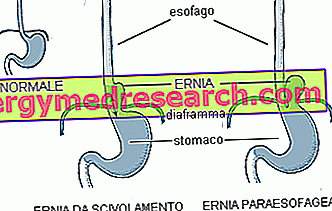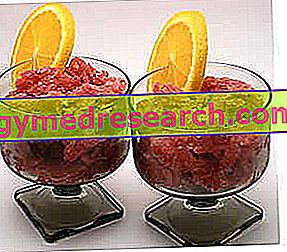The diseases that affect the esophagus determine an alteration of swallowing, the achievement of the bolus in the stomach and gastric containment.
Generally speaking, nutrition is NOT directly involved in the pathogenesis of these diseases, however it can be decisive in reducing symptoms and related complications, both in the short and in the long term.
Esophagus and diseases
The esophagus is an organ that connects the mouth and the stomach; it is hollow, tubular in shape and about 25-30 cm long in the adult. The esophagus starts from the cricopharyngeal sphincter (superiorly) and ends with the cardia (inferiorly).
Like all anatomical structures of the human body, the esophagus is subject to pathological changes that compromise its structural integrity, consequently the physiological mechanism of action. It is therefore deducible that the diseases of the esophagus essentially determine the alteration of peristaltic motility ... which translated into poor words means the impairment of food transport from the pharynx to the stomach. This happens thanks to a "wave" movement that progressively squeezes the esophageal contents from top to bottom: while a segment of upstream esophageal muscles contracts, the downstream section relaxes; subsequently it will be the latter to contract and so on, with succession from top to bottom until the complete descent of the food bolus into the stomach.
The diseases of the esophagus are of two types: some called hypermotility, that is determined by: an increased contractile capacity in conjunction with a lack of coordination between the stimuli and the inability to release the cardia; others classifiable by hypomotility, or generated by the containment insufficiency of the cardia. With regard to the latter, the predominant clinical manifestation is GERD - gastro-oesophageal reflux disease which, if neglected, can lead to chronic inflammation to determine Barrett's esophagitis and / or esophagus.
Nutrition in reflux disease
The hygiene and food advices concerning the diseases of the esophagus, in reality, refer basically to gastro-esophageal reflux disease (GERD).
GERD is a chronic and potentially recurrent disease, therefore specific nutrition should not be considered a transient therapy but a permanent condition.

Gastro-esophageal reflux disease is frequently associated with another disorder, or rather an anatomical alteration that tends to worsen the symptoms and related complications: hiatal hernia ; the latter is nothing but an invagination (a kind of "suction") of the upper gastric portion (cardiac part) above the diaphragm, where the esophagus should end.
Hiatal hernia, GERD and related complications are closely related to inappropriate dietary behaviors, overweight and especially visceral obesity; it follows that, in the event that subjects suffering from GERD and hiatal hernia are characterized by an excess of fat or visceral fat, the first dietary measure useful to correct their feeding is the OVERALL ENERGY REDUCTION. Furthermore, it would be desirable to associate:
- the decrease in consumption portions, therefore a reduction in the volume of meals;
- The consumption of breakfasts, lunches and dinners very little abundant, as the excess favors both the appearance and the chronicization of the symptoms.
- the drastic reduction (better the abolition) of spices, tea and coffee; these condiments / foods promote both acidity and the release of gastric contents into the esophagus.
- The elimination of the components that REDUCE the tone of the LOWER ESOPHAGEAL BALLS worsening the gastric containment and facilitating the reflux; they are respectively: cocoa and / or chocolate, cigarette smoke and mint.
- It would also be desirable to follow the dietary advice useful for reducing gastric acidity, for example moderating the portions of high-protein and hyperlipidic foods (both overcooked and undercooked), limiting alcoholic beverages, paying attention to the digestibility of milk, etc.
Summarizing the guidelines for a diet aimed at reducing the symptoms of GERD (also preventive towards esophagitis and Barrett's esophagus), we recall that it is INDISPENSABLE TO AVOID :
- Foods high in fat
- Large portions in general and especially hyper-proteinic and / or hyperlipid foods, both overcooked and raw
- Coffee, tea, spirits, carbonated and acid drinks
- Chocolate, mint and spices
- Onion and garlic
- Very cold and very hot foods
- Abundant evening meals and milk before sleep
- To lie down after meals
- To eat quickly chewing little
- To perform physical efforts after meals
- Wear clothes and belts that are too tight after meals.
NB . Instead, the use of chewin-gum is RECOMMENDED as it can facilitate esophageal clearance by stimulating salivation and swallowing frequency.
A correct lifestyle can reduce symptoms in 20-30% of cases.
Bibliography:
- Gastrenterology manual for dieticians - National Coordination of University Teachers of Gastroenterology - Italian Gastroenterology Publishing - pag 03:07



